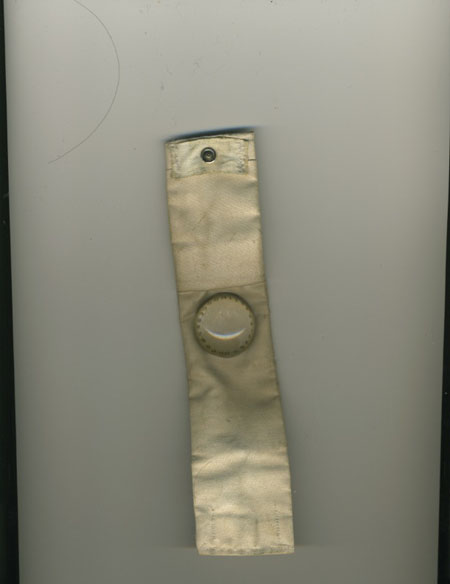![]() body | color | collections | commodity | cube | document | fabric | fetish | gender | glass | home | identity | living | machine | metal | minimal | mobility | narrative | olfactory | organic |
body | color | collections | commodity | cube | document | fabric | fetish | gender | glass | home | identity | living | machine | metal | minimal | mobility | narrative | olfactory | organic |
![]() pain | paper | plastic | plugs | power | protective | rectangular | ritual | round | sound | souvenir | spiritual | style | text-based | time | tool | touch | uniform | value | visual | warm | wood
pain | paper | plastic | plugs | power | protective | rectangular | ritual | round | sound | souvenir | spiritual | style | text-based | time | tool | touch | uniform | value | visual | warm | wood
| Fabric Strip with Button | |||
Narrative: I made this watch to illustrate New Time, a time system for a future where the entire world runs on the same time schedule, night and day matters less, and life revolves around productivity. New Time is based on 360 degrees instead of 365 days. The fabric and snap was purchased from remnants at Joanne Fabric, a cotton fabric and steel snap. Plastic dome was purchased from Canal Plastics for 55 cents, and numbers were printed on a resin sheet at an Epson printer at Parsons School of Design. Clear rubber glue purchased from Canal Plastics for 3.49. Petroleum refineries; Power generation and supply; Plastics material and resin manufacturing; Coal mining; Alumina refining and primary aluminum production; Other basic organic chemical manufacturing; Oil and Gas extraction; Motor vehicle parts and manufacturing; Truck transportation; Oil and gas extraction; Iron and steel mills. Land use includes: Logging; Forest nurseries, forest products, and timber tracts; Cattle ranching and farming. Power generation and supply; Cotton farming; Truck transportation; Oil and gas extraction; Other basic organic chemical manufacturing; Artificial and synthetic fibers and filaments manufacturing; Hosiery and sock mills; Petroleum refineries; Iron and steel mills; Plastics material and resin manufacturing. Water withdraw includes: Cotton farming; Grain farming; Artificial and synthetic fibers and filaments manufacturing; Hosiery and sock mills; Power generation and supply; Fiber, yarn, and thread mills; Other basic organic chemical manufacturing; Paperboard mills; Paint and coating manufacturing; Synthetic dye and pigment manufacturing. Acetate is derived from cellulose by deconstructing wood pulp with dissolving pulps into a purified fluffy white cellulose. The cellulose is then reacted with acetic acid and acetic anhydride with sulfuric acid. Then it is then put through partial hydrolysis to remove the sulfate and a sufficient number of acetate groups to give the product the desired properties. The most common form of cellulose acetate fiber has an acetate group on approximately two of every three hydroxyls. This is known as "acetate". After it is formed, cellulose acetate is dissolved in acetone into a viscous resin for extrusion through spinnerets. As the filaments emerge, the solvent is evaporated in warm air via dry spinning, producing fine cellulose acetate fibers.
|
 |
||
![]()
